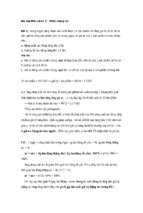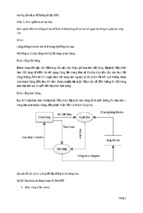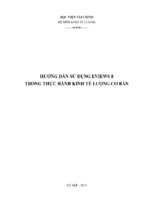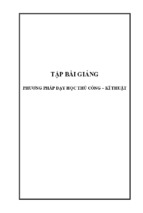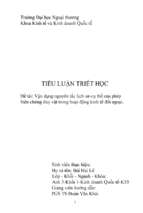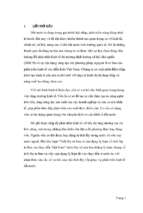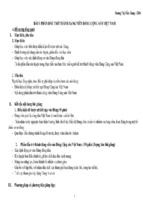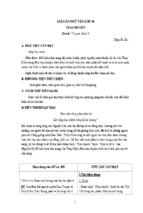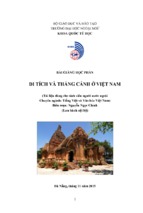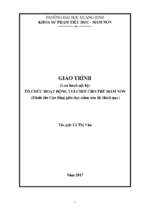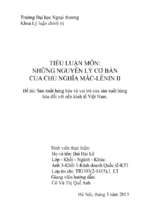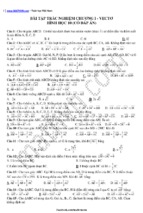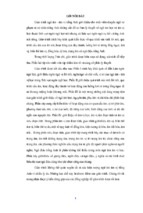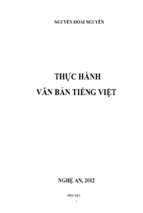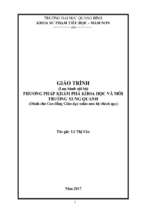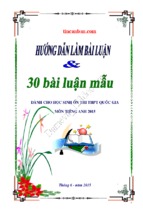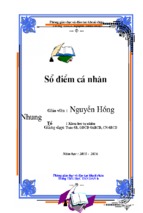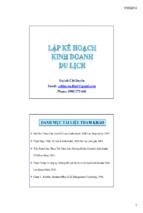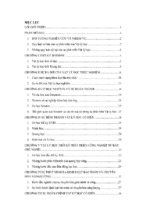ABOUT THE AUTHOR
Dr. I.M. Mujtaba is a Senior Lecturer in Chemical Engineering in the School of
Engineering, Design & Technology at the University of Bradford and is a member
of the University Senate. He is a Fellow of the IChemE, a Chartered Chemical
Engineer and is currently the Secretary of the IChemE’s Computer Aided Process
Engineering Subject Group.
Dr. Mujtaba is actively involved in many research areas like: dynamic
modelling, simulation, optimisation and control of batch and continuous chemical
processes with specific interests in distillation, industrial reactors, refinery processes
and desalination. He has published more than 50 technical papers in major
Engineering Journals, International Conference Proceedings and Books. He is a coeditor of the book “Application of Neural Networks and Other Learning
Technologies in Process Engineering” published by the Imperial College Press,
London in 2001. He has several ongoing research collaborations and consultations
with industries and academic institutions in the UK, Italy, Hungary, Malaysia and
Thailand.
Dr. Mujtaba obtained his BSc in 1983 and MSc in 1984 all in Chemical
Engineering from the Bangladesh University of Engineering & Technology (BUET).
He studied at Imperial College, London with the Commonwealth Scholarship and
received his PhD and DIC in 1989.
Dr. Mujtaba was a Lecturer and Assistant Professor at BUET during 1984-1990.
From 1990-1994 he worked as a Research Fellow at the Centre for Process Systems
Engineering, Imperial College, London.
SERIES ON CHEMICAL ENGINEERING
Ralph T. Yang (Univ. of Michigan)
Series Editor:
Advisory Board: Robert S. Langer (Massachusetts Inst. of Tech.)
Donald R. Paul (Univ. of Texas)
John M. Prausnitz (Univ. of California, Berkeley)
Eli Ruckenstein (State Univ. of New York,)
James Wei (Princeton Univ.)
Vol. 1 Gas Separation by Adsorption Processes
Ralph T. Yang (Univ. of Michigan)
Vol. 2
Adsorption Analysis: Equilibria and Kinetics
Duong D. Do (Univ. of Queensland)
Series on Chemical Engineering
Batch Distillation
Design and Operation
I.M. Mujtaba
University of Bradford, UK
Imperial College Press
Published by
Imperial College Press
57 Shelton Street
Covent Garden
London WC2H 9HE
Distributed by
World Scientific Publishing Co. Re. Ltd.
5 Toh Tuck Link,Singapore 596224
USA office: Suite 202,1060 Main Street, River Edge, NJ 07661
UK office: 57 Shelton Street, Covent Garden, London WC2H 9HE
British Library Cataloguing-in-Publication Data
A catalogue record for this book is available from the British Library.
BATCH DISTILLATION
Design and Operation
Series on Chemical Engineering -Vol. 3
Copyright 0 2004 by Imperial College Press
All rights reserved. This book, or parts thereoj may not be reproduced in any form or by any means,
electronic or mechanical, includingphotocopying, recording or any informationstorage and retrieval
system now known or to be invented, without written permission from the Publisher.
For photocopying of material in this volume, please pay a copying fee through the Copyright
Clearance Center, Inc., 222 Rosewood Drive, Danvers, MA 01923, USA. In this case permission to
photocopy is not required from the publisher.
ISBN 1-86094-437-X
Editor: Tjan Kwang Wei
Printed in Singapore by World Scientlfic Printers (S) Pte Ltd
To my parents: Professor M. Ishaque and Mrs. R. Ishaque
My wife: Nasreen
And my children: Sumayya, Maria, Hamza and Usama
This page intentionally left blank
Foreword
Batch distillation process is around us for many centuries. It is perhaps the oldest
technology for separatinglpurifying liquid mixtures and is the most frequently used
separation method in batch processes. In batch distillation, the main concerns
(issues) for the researchers and process engineers in the last four decades were: (i)
the design of alternative and suitable column configurations, (ii) the development of
mathematical models in line with the development of numerical methods, (iii) the
formulation and solution of dynamic optimisation problems for optimal design,
operation and control, (iv) the development of off-cut recycling strategies, (v) the
use of batch distillation in reactive and extractive mode and most recently (vi) the
use of artificial neural networks in dynamic modelling, optimisation and control.
Although there are several books on distillation in general where batch
distillation is only briefly introduced, there is only one book currently available in
the market that is solely dedicated to Batch Distillation. It addresses some of the
issues mentioned above using short-cut methods, simplified models and Maximum
Principle based optimisation techniques and therefore is a good book to start with
for the undergraduate students and for the practitioners in process engineering whose
interests lie in the basics of batch distillation and in the preliminary design of batch
distillation columns and operations.
In the last 25 years, with continuous development of faster computers and
sophisticated numerical methods, there have been many published work that have
used detailed mathematical models with rigorous physical property calculations and
advanced optimisation techniques to address all the issues mentioned above. These
have been the motivating factors to write this book in which excellent and important
contributions of many researchers around the globe and those by the author and coworkers are accommodated.
This book is structured in 12 chapters highlighting the major developments in
the last 25 years. Moreover, in comparison to the materials in the existing book on
batch distillation and the materials available in other distillation books, the new
materials included in this book are:
0
0
0
0
0
State Task Network (STN) representation of operating sequence for binary
and multicomponent batch distillation
Simple to detailed mathematical models for conventional and
unconventional batch distillation processes
Maximum Principle to sophisticated SQP based nonlinear optimisation
techniques
Short-cut to rigorous methods for optimal design and operation
Binary to multi-component off-cut recovery and optimal recycling
strategies.
vii
...
Batch Distillation
Vlll
0
0
Modelling and optimisation of batch reactive and extractive distillation
processes
Inverted, middle vessel and multivessel batch distillation column operations
Use of continuous distillation columns for batch distillation
Neural Network based hybrid dynamic modelling and optimisation
methods for conventional and unconventional column configurations
I certainly believe that this book will be beneficial and will be a good reference
book for the undergraduate and postgraduate students, academic researchers, batch
processing industries, industrial operators, chemists and engineers for many years to
come.
Dr. Iqbal M. Mujtaba
Senior Lecturer in Chemical Engineering
School of Engineering, Design and Technology
University of Bradford, Bradford BD7 lDP, UK
Email:
[email protected]
September 2003.
Contents
FOREWORD................................................................................................
ACKNOWLEDGEMENTS...........................................................................
VII
XIX
1 . INTRODUCTION.........................................................................................
.............................................................................
1.2. Distillation....................................................................................
1.3. Continuous Distillation ..................................................................
1.4. Batch Distillation...........................................................................
1.5. Semi-batch (semi-continuous)Distillation.........................................
1.1. Batch Processes
3
3
4
4
5
7
.....................................................
References.........................................................................................
10
2. COLUMN CONFIGURATIONS.................................................................
11
1.6. Advantages of Batch DistiJlation
.............................................
2.2. Unconventional co~umnConfigurations ........................................
2.1. ~onventiona~
column Configuration
2.2.1. Inverted Batch Distillation Column..................................................
2.2.2. Middle Vessel Batch Distillation Column........................................
2.2.3. Multivessel Batch Distillation Column ............................................
2.2.4. Continuous Column for Batch Distillation.......................................
.........................................................................................
References
3 . OPERATION .............................................................................................
ix
7
11
11
11
12
13
14
16
17
Batch Distillation
X
3.1. Representation of Operational Alternatives Using State Task Network
........................................................................................................
3.1.1. Binary Mixtures................................................................................
3.1.2. Multicomponent Mixtures................................................................
17
18
20
......................................................................
22
..............................................
25
3.2. Column Operation
3.2.1. Constant Vapour Boilup Rate...........................................................
3.2.2. Constant Condenser Vapour Load ...................................................
3.2.3. Constant Distillate Rate ....................................................................
3.2.4. Constant Reboiler Duty ....................................................................
3.2.5. Cyclic Operation...............................................................................
3.3. Start.up. Production and Shutdown
3.3.1. Start-up Period ..................................................................................
3.3.2. Product Period ..................................................................................
3.3.3. Shutdown Period ..............................................................................
3.3.4. Case Study ........................................................................................
22
23
25
25
25
26
26
27
28
..................................................................
3.4. Performance Measure
33
3.4.1. Case Study- Experiment Based Algorithm for Minimum Time ...... 34
..........................................................................
3.5. Column Holdup
37
3.5.1. Column Characterisation-the Degree of Difficulty of Separation... 38
3.5.2. Performance Measure - Minimum Time .......................................... 39
3.5.3. Case Study ........................................................................................ 39
...................................................................
3.7. Recycle Operation .......................................................................
3.6. Campaign Operation
49
51
3.7.1. Binary Mixture .................................................................................
3.7.2. Multicomponent Mixture .................................................................
51
52
.........................................................................................
54
4 . MODELLING AND SIMULATION .............................................................
56
References
...............................................................................
4.1. Introduction
4.1.1. Simulation of Start-up Period ...........................................................
4.1.2. Simulation of Product Period ...........................................................
56
56
57
xi
Contents
....................................
4.2. Models for Conventional Batch Distillation
58
4.2.1. Rayleigh Model .Model Type I ....................................................... 58
4.2.2. Short-cut Model- Model Type II ...................................................... 59
4.2.3. Simple Model- Model Type I11 ........................................................
63
4.2.4. Rigorous Model - Model Type IV.................................................... 68
4.2.5. Rigorous Model with Chemical Reactions - Model Type V ........... 79
.................
4.3. Models for Unconventional Batch Distillation
85
4.3.1. Continuous Column for Batch Distillation....................................... 85
4.3.2. Inverted Batch Distillation (IBD) Column ....................................... 88
4.3.3: Middle Vessel Batch Distillation Column (MVC)........................... 96
4.3.4. Multivessel Batch Distillation Column (MultiBD) ........................ 103
...........................................
4.5. Numerical Issues .......................................................................
106
4.4. Packed Batch Distillation and Model
107
4.5.1. Classification of ODESand DAEs .................................................
4.5.2. Integration Methods........................................................................
4.5.3. Initialisation of the DAE System....................................................
..................................................................................
References.......................................................................................
Nomenclature
5. DYNAMIC OPTlMlSATlON.....................................................................
.............................................................................
5.1. Optimisation
5.1.1. Essential Features of Optimisation Problems .................................
107
108
111
111
112
116
116
116
.......117
5.2. Dynamic Optimisation (Optimal Control) of Batch Distillation
5.2.1. Minimum Time Problem ................................................................
5.2.2. Maximum Distillate Problem .........................................................
5.2.3. Maximum ProfitProductivity Problem ..........................................
119
120
121
................... 122
5.3. Summary of the Past Work on Dynamic Optimisation
5.4. Summary of the Past Work on the Solution of Optirnisation Problems
......................................................................................................
5.5. Maximum Principle Based Dynamic Optimisation Technique
124
........124
xii
Batch Distillation
5.5.1.
5.5.2.
5.5.3.
5.5.4.
Application to Batch Distillation:Minimum Time Problem ......... 126
Application to Batch Distillation: Maximum Distillate Problem... 132
Application to Batch Distillation: Maximum Profit Problem ........ 133
Application to Batch Distillation:Short-cut Model .......................
134
...........135
5.6. Approaches to Nonlinear Dynamic Optimisation Technique
5.6.1. Feasible Path Approach ..................................................................
5.6.2. Infeasible Path Approach................................................................
135
135
5.7. Nonlinear Programming (NLP) Based Dynamic Optimisation ProblemFeasibte Path Approach
136
5.7.1. Control Vector Parameterisation(CVP)......................................... 137
5.7.2. NLP Optimisation Problem ............................................................
138
....................................................................
5.8. NLP Based Dynamic Optimisation Problem- Infeasible Path Approach
......................................................................................................
139
5.9. Gradient Evaluation Methods in NLP Based Optimisation Techniques
......................................................................................................
5.9.1. Gradient Evaluation for Infeasible Path Approach ........................
5.9.2. Gradient Evaluation for Feasible Path Approach ...........................
140
140
140
..........144
5.10. Application of NLP Based Techniques in Batch Distillation
5.10.1. Example 1.....................................................................................
5.10.2. Example 2 .....................................................................................
5.10.3. Example 3 .....................................................................................
.......................................................................................
References
6. MULTIPERIOD OPERATION OPTlMlSATlON ......................................
6.1. Introduction
.............................................................................
144
145
147
150
153
153
........155
6.2. Optimisation Problem Formulation- Mujtaba and Macchietto
6.2.1. Binary Operation ............................................................................
6.2.2. Multicomponent Operation ............................................................
.................
6.3. Solution Method .
Mujtaba and Macchietto
6.3.1. Column Initialisation......................................................................
156
160
164
164
Contents
xiii
6.3.2. Inner Loop Optimisation Problems ................................................
6.3.3. Outer Loop Optimisation Problem .................................................
164
165
....................................................................
6.4. Example Problems
168
6.4.1. Binary Distillation (Simple Model)................................................
168
6.4.2. Ternary Distillation (Simple Model) ..............................................
170
176
6.4.3. Ternary Distillation (Detailed Model) ............................................
6.4.4. Multiperiod Campaign Operation Optimisation - Industrial Case
Study ..........................................................................................................
179
.............
6.5. Optimisation Probiem Formulation- Farhat et a1
6.5.1. Problem 1 .Maximisation of Main-cuts ........................................
6.5.2. Problem 2 .Minimisation of Off-cuts ............................................
6.5.3. Example ..........................................................................................
References
........................................................................................
187
187
188
189
191
7. DESIGN AND OPERATION OPTlMlSATlON.........................................
7.1. Introduction
.............................................................................
192
192
7.2. Design and Operation Optimisation for Single Separation Duty by
Repetitive Simulation
193
7.2.1. Example .Single Separation Duty .................................................
199
.......................................................................
7.3. Design and Operation Optimisation for Single and Multiple Separation
Duties: Problem Formulation and Solution
199
7.3.1. Representation of Design. Operations and Separations Duties...... 200
7.3.2. Objective Function ......................................................................... 204
7.3.3. Optimisation Problem Formulation and Solution ..........................
205
7.3.4. Examples ........................................................................................
212
.........................................
..
7.4. Multiperiod Design and Operation Optimisation by Logsdon et al 219
7.4.1. Example 1....................................................................................... 220
7.4.2, Example 2. ...................................................................................... 220
7.4.3. Combination of Allocation Time with Zero Set up Time .............. 222
...........
7.5. Multiperiod Operation Optimisation by Bonny et al
7.5.1. Example..........................................................................................
224
227
xiv
Batch Distillation
.......................................................................................
229
References
8. OFF-CUT RECYCLE ...............................................................................
8.1. Introduction .Off-cut Recycle in Binary Separation
230
...........
230
8.2. Classical Two-Level Optimisation Problem Formulation for Binary
Mixtures
233
8.2.1. Example Problems .Set 1 ..............................................................
236
8.2.2. Example Problems - Set 2 ............................................................... 241
.........................................................................................
8.3. One Level Optimisation Problem Formulation for Binary Mixtures
242
......243
8.5. More Examples using the One Level Optimisation Formulation ......244
8.6. Notes on Binary Off-cut Recycle .................................................
246
8.7. Introduction .Off-cut Recycle in Multicomponent Separation ........247
8.4. Comparison of the Two Level and the One Level Formulations
8.7.1. Operational Strategies for Off-cut Recycle ....................................
249
.
8.8. Optimisation Problem Formulation for Multicomponent Mixtures 250
8.8.1. Solution of the Optimisation Problem............................................ 252
8.9. Decomposition of the Optimisation Problem Formulation for
Multicomponent Mixtures
253
8.10. Measure of "the degree of difficulty" of Separation. q for
Multicomponent Mixtures
256
.................................................................
.................................................................
8.11. Example Problem using Multicomponent Mixtures ..........
8.1 1.1. Example 1.....................................................................................
8.11.2. Example 2 .....................................................................................
257
257
262
.................263
8.12. Multicomponent Off-cut Recycle Policy of Bonny et al
8.12.1. Example........................................................................................
.......................................................................................
References
265
269
Contents
xv
.
9 BATCH REACTIVE DISTILLATION (BREAD)........................................
.............................................................................
9.2. Review .....................................................................................
9.1. Introduction
9.2.1. Experimental Studies......................................................................
9.2.2. Modelling and Simulation..............................................................
9.2.3. Design, Control and Optimisation..................................................
270
270
271
271
272
272
.................... 273
9.4. Process Modelling and Simulation...............................................
274
9.5. Dynamic Optimisation ...............................................................
276
9.6. Example: Dynamic Optimisation.................................................
277
9.7. Profit Maximisation via Maximum Conversion Optidsation .........282
9.3. Selecting the Right Column for BREAD
9.7.1. Example ..........................................................................................
9.8. Polynomial Based Optimisation Framework .A New Approach
283
.....285
...................
9.9. Campaign Mode Operation Optimisation
289
9.9.1. Example: Hydrolysis of Acetic Anhydride .................................... 290
9.10. Optimal Design of Operating Procedures with Parametric Uncertainty
......................................................................................................
9.10.1. The Worst-case Design Algorithm...............................................
9.10.2. Case Study ....................................................................................
293
293
294
.......................................................................................
300
10. BATCH EXTRACTIVE DISTILLATION(BED) ......................................
302
References
............................................................................
10.2. Comparison Between a CBD and a BED Process .............
10.3. Solvent Feeding Modes and Operating Constraints ...........
10.1. Introduction
302
304
304
Batch Distillation
xvi
10.3.1. Batch Mode .............................................................................
10.3.2. Semi-continuousMode............................................................
304
307
...................................
309
10.5. General Multiperiod Dynamic Optimisation (MDO) Problem
Formulation
311
10.4. Operational Constraint (Path Constraint)
10.4.1. One Time Interval ...................................................................
10.4.2. Two Time Intervals .................................................................
....................................................................................
309
309
10.6. Product Specifications and Decomposition of MDO Problem into
Single-period Dynamic Optimisation (SDO) Problems
313
10.6.1. Maximum Productivity Problem ............................................
314
315
10.6.2. Minimum Time Problem ........................................................
.............
10.7. Process Model and the Solution Method
.....................................
316
............................................................................
10.8. Case Studies
317
10.8.1. Example 1: Minimum Time Problem .Close Boiling Mixture317
10.8.2. Example 2: Maximum Productivity Problem - Close Boiling
324
Mixture .................................................................................................
10.8.3. Example 3: Multiperiod Optimisation with Azeotropic Mixture
..............................................................................................................
326
References
.......................................................................................
11. UNCONVENTIONAL BATCH DISTILLATION......................................
............................................................................
11.2. Use of Continuous Columns for Batch Distillation ............
11.1. Introduction
329
331
331
331
Introduction............................................................................. 331
SPSS, SPSSS, M P S S S Operations .......................................... 334
Single Separation Duty in Continuous Columns ..................... 336
Case Study - Single Separation Duty ......................................
339
Multiple Separation Duties in Continuous Columns ...............346
Case Study - Multiple Separation Duties ................................ 347
Notes on the Use of Continuous Columns for Batch Distillation
..............................................................................................................
350
11.2.1.
11.2.2.
11.2.3.
11.2.4.
11.2.5.
11.2.6.
11.2.7.
xvii
Contents
.............
11.4. Inverted Batch Distillation (IBD) Column .................
11.3. Middle Vessel Batch Distillation Column (MVC)
11.4.1. Example 1....................................................................................
11.4.2. Example 2 ....................................................................................
11.5. Multi Vessel Batch Distillation Column (MultiBD)
...........
351
353
353
354
355
11.5.1. Optimisation Problem Formulation..............................................
11.5.2. Example........................................................................................
355
359
.......................................................................................
363
References
12. APPLICATION OF NEURAL NETWORKS IN BATCH DISTILLATION365
............................................................................
12.1. Introduction
12.1.1. Neural Networks Architecture......................................................
12.1.2. Neural Networks Training............................................................
365
366
367
................
12.2. Hybrid Modelling and Optimisation in CBD
367
12.2.1. The Model and the Actual Process ...............................................
368
369
12.2.2. Hybrid Modelling of Dynamic Processes ....................................
12.2.3. Dynamic OptimisationFramework Using First Principle Model 37 1
12.2.4. Dynamic OptimisationFramework Using Hybrid Model ...........371
12.2.5. Hybrid Model Development for Pilot Batch Distillation Column373
377
12.2.6. NN Based OptimisationAlgorithm..............................................
.............
12.3. NN Based Modelling and Optimisation in MVC
12.3.1. Neural Network Based Modelling................................................
12.3.2. OptimisationProblem Formulation..............................................
12.3.3. Results and Discussions................................................................
.......................................................................................
References
INDEX .........................................................................................................
379
379
385
386
391
393
This page intentionally left blank
Acknowledgements
Alhamdulillah- all praises be to almighty Allah who made it possible for me to write
this book.
About sixty percent of our own work included in this book was carried out
during my stay at the Imperial College London in the Department of Chemical
Engineering and in the Centre for Process Systems Engineering (CPSE) between
1985 and 1994. I am greatly indebted to Professor Sandro Macchietto who was very
kind to accept me as his PhD student in 1985 and allowed me to work with him until
1994. He greatly influenced and motivated me to explore batch distillation in depth.
I owe to Professor Pantelides for his generous help and support in mathematical
modelling and advanced numerical methods. I am grateful to Professor Sargent and
Professor Perkins (ex directors) for allowing me to work at the CPSE from 1990 to
1994. I would like to express my gratitude to Dr. Chen who helped me in great deal
in understanding and learning SQP based optimisation techniques. Finally, I would
like to acknowledge sincerely the financial support provided by the ACU during
1985-1988 in the form of Commonwealth Scholarship to carry out the research in
batch distillation.
The remaining forty percent of our own work included in this book was carried
out at the University of Bradford during 1995-2002. I am grateful to Professor
Bailes, Professor Benkreira and Dr. Slater for their continuous support and
motivation in my work on batch distillation. I owe to Professor Coates for his
encouragement to get on with this book and complete it as soon as possible. The
continuous supports to my batch distillation research by Professor Macchietto,
Professor Pantelides and the Process Systems Enterprise (PSE) Ltd. during 19952002 are gratefully acknowledged.
Some of the materials included in this book are due to international
collaborations with the University of Malaya (Malaysia) and the University of
Padova (Italy). Dr. Hussain (University of Malaya) influenced and motivated me in
applying Neural Network Techniques in dynamic modelling and optimisation, I am
grateful for his support. I would like to thank Professor Barolo (University of
Padova) for his involvement in the work on MVC columns and for inviting me to
Padova to give lectures on recent developments in batch distillation in 1997. I would
like to acknowledge the UK Royal Society for the financial supports to carry out the
collaborative work with Dr. Hussain (Malaysia) since 1999 and Professor Perkins
for his kind support in the process. In this regard, I am also grateful to Professor Day
(Dean) for supporting me to continue my research collaboration with Malaysia.
Special thanks are due to Professor Urmila Diwakar (University of Illinois at
Chicago, USA), Dr. Eva Sorensen (UCL, London), Dr. Peter Lang (Technical
University Budapest, Hungary) and Dr. Ben Betlem (University of Twente,
Netherlands) for many useful technical discussions in the past. I would also like to
xix

